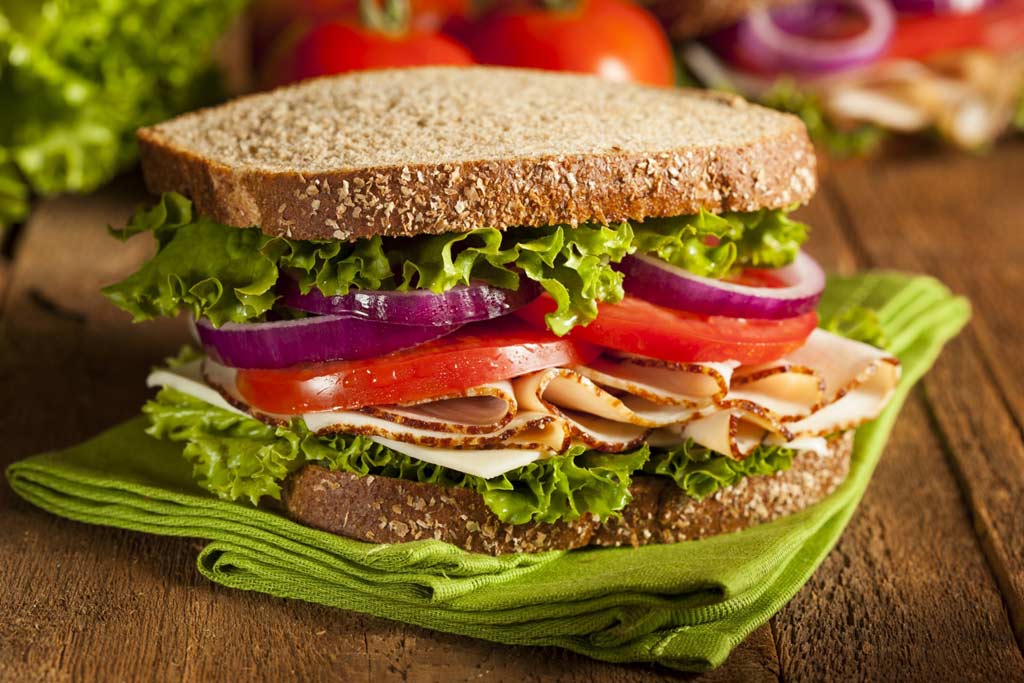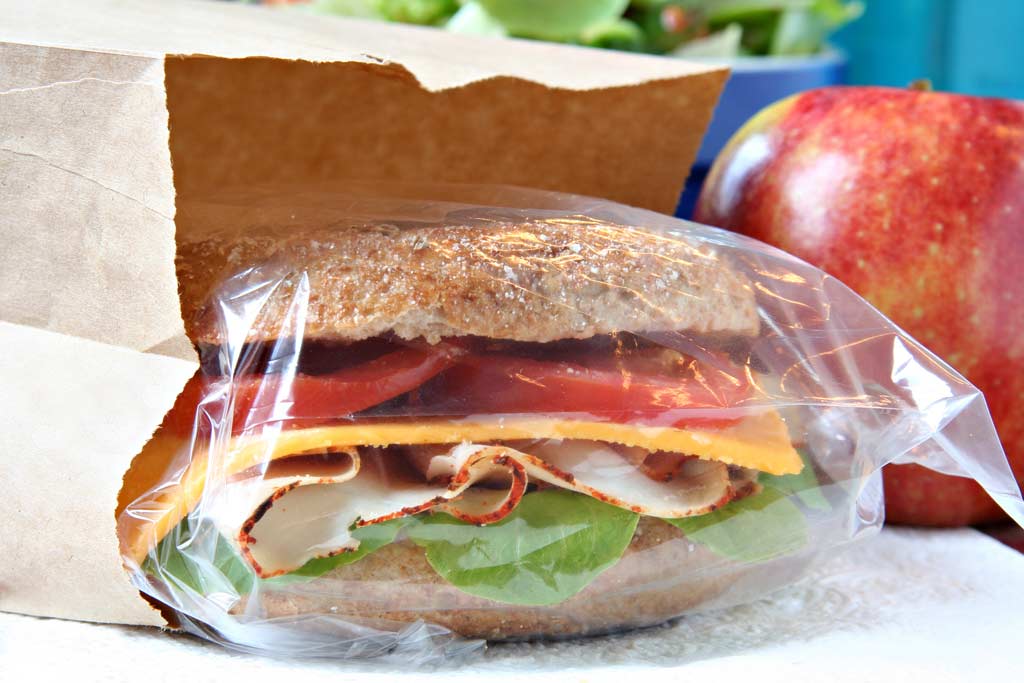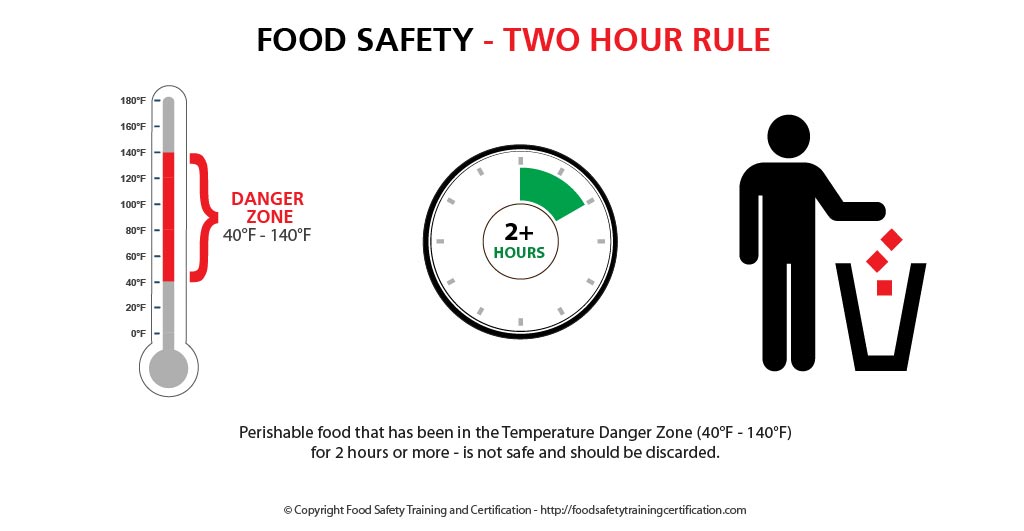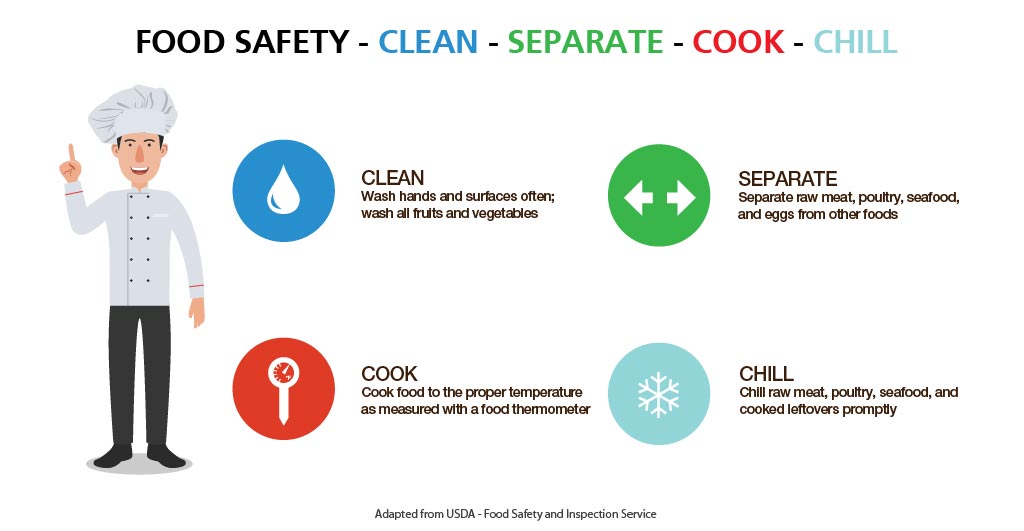Sandwiches are potentially high risk food items. Sandwiches can contain raw or fresh ingredients (e.g., vegetables) – that if not washed can harbor dangerous bacteria like E. coli.
Sandwiches can also have cold cuts or deli meats – which can harbor a bacteria called Listeria monocytogenes. Pregnant women, the elderly, young children, and people with weakened immune systems are at a greater risk of getting a serious infection from Listeria.
Follow basic food safety principles when preparing and handling sandwiches. Likewise, during warmer months bacteria multiply faster – so preparing food is more challenging.
Use the hashtags #sandwich or #NationalSandwichMonth on social media to post a picture of your favorite sandwich or find deals!



Ready to Eat (RTE) Foods
Cold cuts, or deli meats, belong in a class of foods called Ready to Eat (RTE) foods.
Foods that have been prepared to so they can be consumed as is, without any additional cooking, are ready to eat foods.
Ready to eat foods are prepared and processed to specific guidelines to ensure that there is no contamination or chance of bacteria forming and need to be stored at 40°F or lower to them keep for safe consumption.
Some examples of ready-to-eat foods include:
- Soft cheeses such as brie, feta, ricotta, blue-veined, and Mexican-style soft cheeses such as queso fresco (unless they are made with pasteurized milk)
- Soft-serve ice cream
- Hot dogs, luncheon meats, cold cuts
- Pâtés/meat spreads – unless canned
- Precooked chicken and other meats
- Refrigerated smoked seafood products
- Deli-type salads such as coleslaw, potato, macaroni, tuna, etc.
- Pre-packed raw vegetables and mixed raw vegetable salad
- Pre-cut fresh fruits and fruit salads



Dangers of Listeriosis
Sandwiches can contain deli or luncheon meats which can contain a dangerous bacteria called Listeria. Even when refrigerated, the Listeria in contaminated deli meats can multiply and grow.
Listeria monocytogenes is the species of pathogenic bacteria that causes the infection listeriosis. The bacteria can contaminate foods and cause a mild gastrointestinal illness (gastroenteritis) or a severe illness.
The CDC estimates that Listeria is the third leading cause of death from foodborne illness in the U.S. An estimated 1,600 people get sick from Listeria each year, and about 260 die.
- Learn about proper hygiene, cross contamination, cold and hot food safety, foodborne pathogens, and best practices to prevent foodborne illness.
- Food Manager Training & ANSI Certification - $99.00
- Food Handler Training - only $7.00!
- HACCP Training: 16hr/4hr/1hr
- Food Allergy Training - $15.00
- Enter Promo "train10off" at Checkout
Listeriosis can cause a variety of symptoms, depending on the person and the part of the body affected. Listeria can cause fever and diarrhea similar to other foodborne germs, but this type of Listeria infection is rarely diagnosed.
- Symptoms – Pregnant Women: Pregnant women typically experience only fever and other flu-like symptoms, such as fatigue and muscle aches. However, infections during pregnancy can lead to miscarriage, stillbirth, premature delivery, or life-threatening infection of the newborn. Reference: American Pregnancy Association
- Symptoms – Others: Symptoms can include headache, stiff neck, confusion, loss of balance, and convulsions in addition to fever and muscle aches.
Pregnant women, the elderly, young children, and people with weakened immune systems are at greater risk of getting listeriosis if they eat cold cuts without heating them first. The CDC advises that those over 50 years of age – to reheat cold cuts to 165°F.



Bacteria Danger Zone
The bacteria “Danger Zone” is the temperature range between 40°F and 140°F in which bacteria that cause foodborne illness can begin to multiply. At temperatures of 90°F and above, they multiply even more rapidly.
Perishable food includes meat, poultry and eggs – and must be kept cold. Without proper time and temperature control, pathogens may grow and multiply and cause food poisoning.



Two Hour Rule
Potentially hazardous food that remains in the temperature “Danger Zone”, 40°F-140°F, for more than 2 hours should be discarded – 1 hour if the temperature is above 90°F .



Sandwich Food Safety Basics
Here are some food safe principles and procedures that will avert a possible sandwich food illness:



Preparation: Keep Clean
- Before beginning making a sandwich, make sure to wash your hands with soap and warm water for 20 seconds.
- Always clean vegetables because they can contain danger bacteria. Lettuce, tomatoes and cucumbers are the most common foods that can carry E.coli.
- Wash cutting boards, dishes, utensils, and countertops with hot, soapy water after preparing each food item and before you go on to the next item.
Preparation: Avoid Cross Contamination
- Avoid cross-contamination during sandwich assembly and storage. When using a cutting board for food that will not be cooked, such as bread, lettuce, and tomatoes, be sure to wash the board after using it to cut raw meat and poultry.
Safe Storage
Food safety experts stress the importance of using precooked or ready-to-eat food as soon as you can. Follow FDA guidelines for storing food in the refrigerator and freezer. The short time limits for home-refrigerated foods will help keep them from spoiling or becoming dangerous to eat.
- Packaged deli meats can be stored in the refrigerator for 2 weeks before opening. After opening a package of lunch meats or buying sliced lunch meats at a deli, you can refrigerate them for 3 to 5 days. Keep your refrigerator at 40°F or less).
- Deli meats can also be frozen for 1 to 2 months for best quality. Frozen foods are safe indefinitely (kept at 0°F).
Summary
Enjoy your sandwich – just follow basic food safety sandwich principles and remember – pregnant women, the elderly, young children, and people with weakened immune systems are at a greater risk of getting a serious infection called listeriosis – if they eat cold cuts without heating them first.






